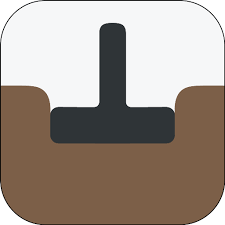ETABS or SAFE for Foundation Design
- premjit

- Sep 20, 2022
- 4 min read
Updated: Dec 6, 2025
There are different types of foundations for building structures. The type of foundation you choose for your building project will depend on a number of factors, the main ones being the type of soil, the weight and height of the planned structure, any construction restrictions in place, and so on. Other important considerations include the climate and the water table (a shallow water table can make excavating difficult).
The purpose of this blog is not to discuss when to choose these foundations, but rather the method that is more feasible for their design. Many engineers ETABS Structural software and CSI SAFE is a software that can analyze and design every type of foundation, when this is not the case. Similarly, many also think that ETABS and SAFE are extremely different software programs, when in reality ETABS can be used to analyze rafts and other foundation systems.

Is SAFE different from ETABS
Both ETABS and SAFE are produced by CSI, so they have a lot in common. The user interface has been updated recently, so it's almost the same for both programs. You can use either one to analyze a raft or slab, and you'll get similar results.
There are three different levels of ETABS that CSI sells, each with different features. The reason why CSI offers both products is because they cater to different needs.
ETABS Plus - Is the most affordable level of ETABS
ETABS Non-Linear - Is an intermediate level of ETABS
ETABS Ultimate - is the most feature-rich version of the software, including the SAFE features like strip-based design. It also happens to be the most expensive option.
A question you might have is, why does SAFE software exist if ETABS Ultimate has all the same features? I can explain this with a use case.
Consider a scenario where you have 2 projects and 2 engineers in the office. One engineer is working on the analysis and design of the super structure of a building, and the other is working on the foundation design of the second building. If both engineers need to work on ETABS parallelly for these 2 projects, the office would need at least 2 licenses of ETABS – one ETABS Plus and one ETABS Ultimate with SAFE features for designing foundations.
Now think of a large office where there are many projects and engineers. To facilitate this use case and reduce costs, there are different levels in ETABS, and there is SAFE for designing foundations.
The office can save money and increase efficiency by choosing to have 1 ETABS Plus and SAFE. This way, 2 engineers can work on 2 different things at the same time.
If you're aiming to master such efficient design workflows and software applications, enrolling in the best civil foundation online course by CivilERA can equip you with practical knowledge and real-world strategies.
Advantage & Disadvantages of using ETABS for foundation analysis
If you need to model the foundations alongside the superstructure, ETABS is the software for you. It allows for an integrated model that is more accurate. This way, more important structures and their foundation systems can be analysed in a single model.
If your Raft levels are different or have folds and if you want to incorporate them in the model, ETABS allows you handling this in levels where as SAFE do not.
The only downside to using ETABS is that it can be difficult to import reactions from one ETABS model to another. SAFE is easier in this regard. However, this isn't a huge downside since ETABS does allow a workaround using e2k files.
Below, I will cover industry and consulting practices for designing different types of foundations.
Design of Isolated Footings or Pad Footings
Isolated footings are best imagined as a cantilever slab. By doing some quick hand calculations, you can easily design isolated footings. To calculate the area needed for the footing, simply base it on the loads and SBC of soil. You'll also need to be mindful of one-way shear, punching shear and moments. Though SAFE or ETABS can be used for analysis and design, it's just as easy to do it yourself by using an excel sheet or designated software for this purpose. If not, most offices will have easy to use excel sheets or manual designs for isolated footings that you can follow. Having said this, an isolated footing can also be analyzed using software like ETABS & SAFE
Design of Combined footings
Designing combined footings with 2 columns by hand calculations and then using excel sheets can help avoid repeated designs and iterations, and arrive at the configuration of foundations quickly.
However, using ETABS and SAFE for the modelling and analysis can be more accurate. You can easily zone the shell forces and then design it.
If the combined footing has more than 2 columns, using software will be easier to get accurate results.
Strip Foundations
Foundation Strips can be analyzed manually using rule of thumbs as mentioned in IS 456 or from first principle. But then it can also be analyzed using ETABS, SAFE or STAAD and then easily arrive at the shell forces.
Pile cap and Pile Foundations
Pile caps are generally designed manually according to truss or beam theory, depending on the number of piles. If there are more than six piles, or if there are a greater number of columns in a group, then software modelling is recommended. Piles are generally designed manually similar to columns, but with some concepts and idealizations applied.
Rafts and Piled Rafts
Rafts and Piled rafts have to be designed using ETABS or SAFE to capture the soil structure interaction. It is pretty challenging to do these designs manually. By using software, we can fine tune the analysis and there by achieve accuracy and economy.
Summary
The design of foundations involves the interpretation of soil type and soil report, idealizing the behavior, performing hand calculations and checks, and using a software in many cases. The choice of method depends on the situation. For all types of footings, a software is not always needed, but in some situations, it will be necessary for optimum design. All software like SAFE, ETABS and STAAD perform shell analysis and it is all about interpreting the results. Design is after all a simple capacity check. Finally, ETABS and SAFE are very much the same!
Whether you're just starting out or looking to upskill, CivilERA offers expert-led instruction in etabs structural software that bridges the gap between theory and professional practice.




Comments